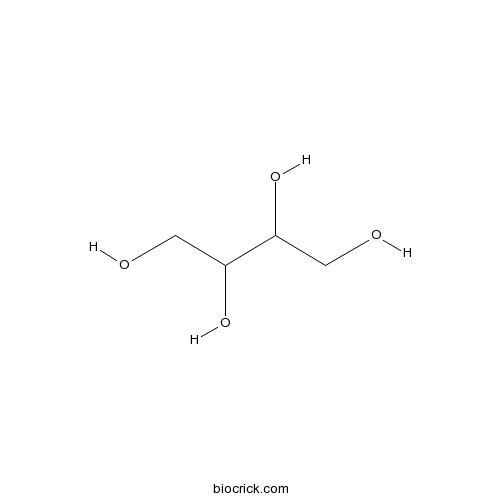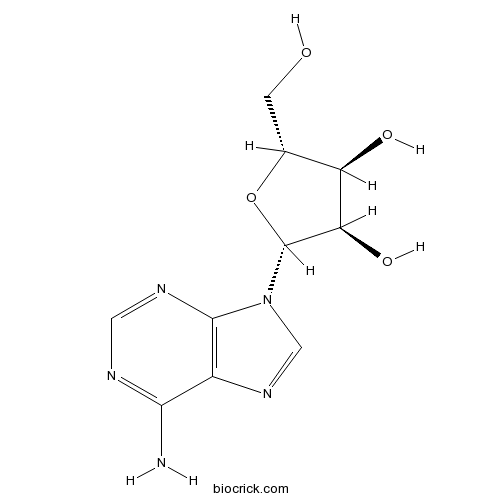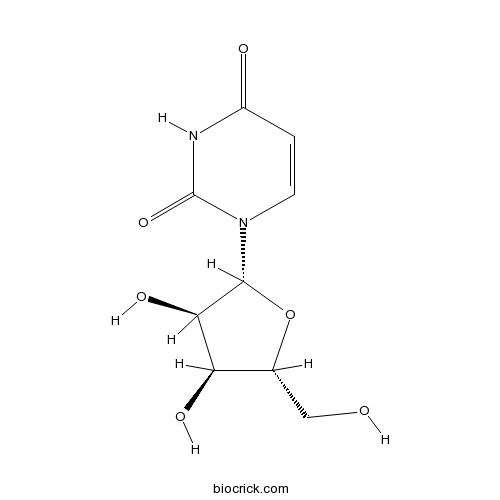Pinellia pedatisecta
Pinellia pedatisecta
1. The products in our compound library are selected from thousands of unique natural products; 2. It has the characteristics of diverse structure, diverse sources and wide coverage of activities; 3. Provide information on the activity of products from major journals, patents and research reports around the world, providing theoretical direction and research basis for further research and screening; 4. Free combination according to the type, source, target and disease of natural product; 5. The compound powder is placed in a covered tube and then discharged into a 10 x 10 cryostat; 6. Transport in ice pack or dry ice pack. Please store it at -20 °C as soon as possible after receiving the product, and use it as soon as possible after opening.
Natural products/compounds from Pinellia pedatisecta
- Cat.No. Product Name CAS Number COA
-
BCN1664
Erythritol149-32-6
Instructions

-
BCN5796
Adenosine58-61-7
Instructions

-
BCN4090
Uridine58-96-8
Instructions

Quality control of the traditional Chinese medicine Ruyi jinhuang powder based on high-throughput sequencing and real-time PCR.[Pubmed: 29844337]
Traditional Chinese medicine (TCM) has been practiced for thousands of years, although concerns about the efficacy, legality, and safety of TCM continue to be raised. Chromatographic studies have detected the presence of heavy metals and plant toxins within some TCM preparations. However, chromatography is not able to identify all of the compounds of TCM, particularly those items that are not clearly labeled on the packaging. The present study aimed to establish a supplemental method that better assesses the ingredient components of TCM preparations.We established an effective approach to screen the biological and toxical composition of TCM based on high-throughput sequencing (HTS), as well as fast detection and validation of the toxical species by real-time PCR, based on ITS2 DNA barcoding. Ruyi jinhuang powder (RHP), a classical herbal prescription containing the toxical herb Arisaematis rhizoma, was chosen to test the method. This method could determine whether the Arisaematis Rhizoma had been replaced by Pinellia pedatisecta in the RHP. The results were validated by real-time PCR. 90% compositions of RHP were identified by ITS2 DNA barcoding, suggesting that more DNA barcoding markers are needed for TCM identification. The strategy of high-throughput sequencing has the potential for comprehensive ingredient profiling for TCM preparations. Real-time PCR provides a expeditious metehod for monitoring the safety and legality of TCM preparations.
Expression of Pinellia pedatisecta Lectin Gene in Transgenic Wheat Enhances Resistance to Wheat Aphids.[Pubmed: 29587341]
None
Three new alkaloids isolated from the stem tuber of Pinellia pedatisecta.[Pubmed: 29455729]
None
[Pro-inflammatory mechanism of lectin from Pinellia pedatisecta on macrophage].[Pubmed: 28840690]
To investigate the mechanism of lectin from Pinellia pedatisecta(PPL) on macrophage-induced inflammation and its association with inflammatory corpuscles NLRP3. Lectin from P. pedatisecta was isolated and purified by gel chromatography, and its purity was analyzed by using SDS-PAGE gel electrophoresis. ELISA was used to investigate the effect of PPL on inflammatory cytokines released by macrophages, with IL-1β as indicators;and fluorescence probe DCFH-DA fluorometer was used to determine changes in active oxygen ROS of macrophages after application of lectin from P. pedatisecta.RAW264.7 cells were pre-treated with ROS inhibitor N-acetylcysteine (NAC) to investigate the effect on ROS and the release of inflammatory factor IL-1β from macrophages to research the relationship between them. The protein levels of NLRP3, Caspase-1 p20, ASC and TXNIP were determined by Western blot.The results showed that isolated and purified PPL could reach electrophoretic purity; PPL stimulated macrophages and induced the excessive release of ROS, leading to strong oxidative stress reaction, and the levels of intracellular inflammatory factorsIL-1β were significantly increased. NAC could inhibit PPL-induced ROS excessive production and significantly reduce the release of IL-1β. In addition, PPL could induce the increase in protein expression levels of Caspase-1 p20, NLRP3 and ASC, and significantly reduce TXNIP expression. The results showed that PPL could cause a strong oxidative stress response by stimulating macrophages, activate inflammatory corpuscles NLRP3, and result in large amount of IL-1β release. That is, PPL could lead to inflammatory cascade reaction by promoting the maturation and secretion of IL-1β through ROS-TXNIP-NLRP3-IL-1β signaling pathway.
Transcriptional network in ovarian cancer cell line SKOV3 treated with Pinellia pedatisecta Schott extract.[Pubmed: 27176137]
Ovarian cancer is the most lethal disease among the malignant tumors of female reproductive organs. Few successful therapeutic options exist for patients with ovarian cancer. The common therapeutic methods are surgical operation, chemotherapy, radiotherapy, and combination of these treatments. In recent years, studies have indicated that Pinellia pedatisecta Schott (PPS), a traditional Chinese medicine, could inhibit tumor growth. In this study, we demonstrated that PPS extract could induce apoptosis in SKOV3 cells in a dose- and time-dependent manner. We further conducted transcriptome sequencing on PPS extract-treated SKOV3 cells along with controls, and identified 1,754 transcripts whose expression differs at least 3-fold over the controls. These differentially expressed transcripts include the apoptosis-related genes such as the caspase family members, and were significantly enriched in steroid biosynthesis in the KEGG pathway database compared with the transcriptome background. Most of the differentially expressed transcripts from this pathway were upregulated in PPS extract-treated cell line, indicating that PPS extract-induced apoptosis was accompanied by increased steroid biosynthesis (e.g. zymosterol). These results suggest that PPS extract could be a new cytostatic therapeutic agent for ovarian cancer.


